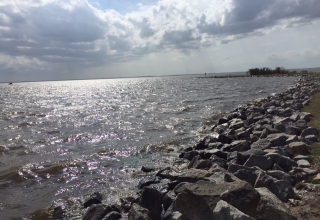
The domain of ideas is entered whenever we attempt to generate a proposal intended to move from the current to the desired state. Ideas are sometimes fragile, often misunderstood, and easily lost. While information exists everywhere, we often ignore or misinterpret it. But we can usually go back and retrieve it. Similarly, even though intentions may be ignored or distorted, they resist extinction. Their resistance to change is often a source of frustration: old values linger as do old visions and purposes. Good ideas, on the other hand, are easy to lose and hard to recover.
Settings must be created in which ideas can readily be generated and retained. Two processes are essential. Divergence produces creative ideas. Divergence requires a minimal censorship of ideas, minimal restriction on people offering their own suggestions and taking risks, and minimal adherence to prescribed rules or procedures for the generation of new ideas. The second process is convergence. People must be given the opportunity to build on each other’s ideas, to identify similarities in their ideas, and to agree upon a desired course of action. Convergence requires leaders to observe specific rules and procedures, to listen to ideas and to be constructively critical of other ideas.
Problem-Solving
At this point, we are ready to make use of the analyses already engaged regarding the domains of intentions, information an ideas. While we enter these domains frequently when we are navigating our daily life, they come to the fore in particular when we are confronting a problem that is not easily solved. It is at these challenging moments that we are most likely to be attracted to readily accessible information and intentions that have been manufactured by other people. Misinformation and lies are abundantly available to lead us in the wrong direction. Given our vulnerability to misinformation and lies at these problem-solving points in our life, we will focus on processes that can be effectively deployed when facing a problem.
Intentions [Desired State]: This is a terminating point. What are the goals, aims, ends, purposes, objectives, desired outcomes to be achieved. A description or portray is offered of how the outcome will look and work.
A critical review should be engaged that not only helps us determine what we really care about regarding outcomes, but also helps us discern what we don’t really care about and that helps us surface the motives behind the lies and misinformation that swirl around our head and heart. The main point to be made here is that this discernment is not about finding the one thing we care about. It is about finding the multiple things we care about and identifying the relationships between these various outcomes. We will be true to ourselves when we recognize that we care about more than one thing.















